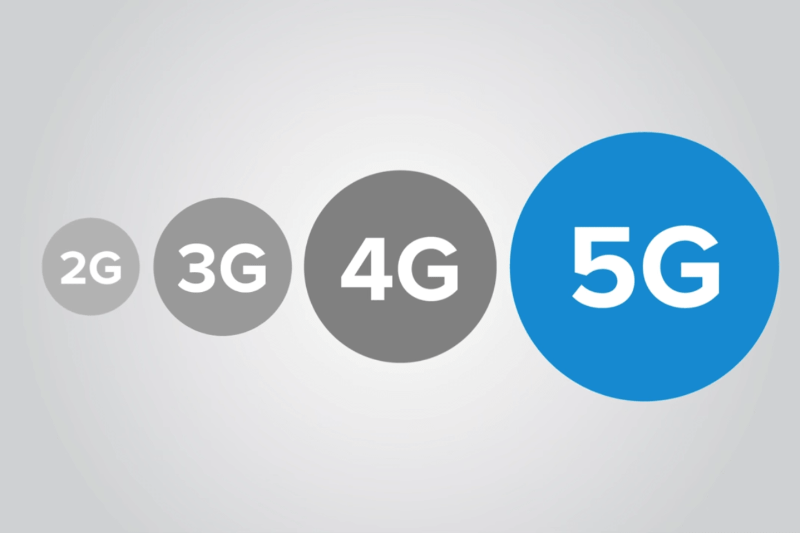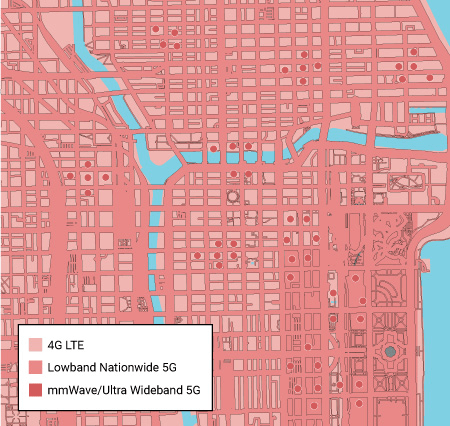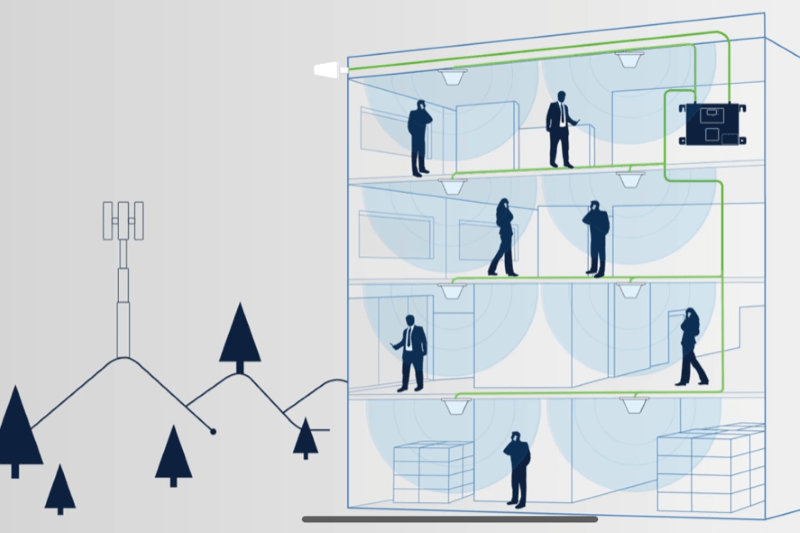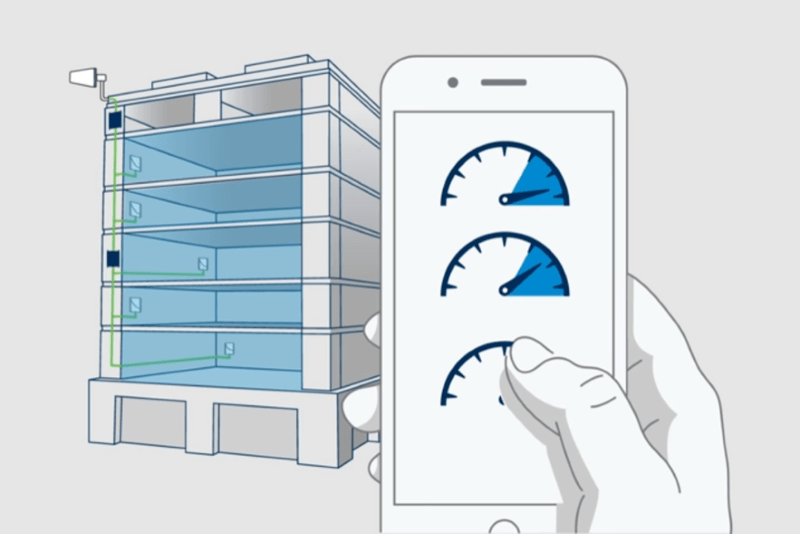Home


Resource Center
As urban areas grow denser and demand for mobile data skyrockets, traditional cell towers alone can’t keep up. Enter small cell networks—compact, low-power solutions revolutionizing how cellular coverage is delivered in cities, campuses, and crowded venues. While these miniature powerhouses might go unnoticed on street lights and building walls, they’re becoming the backbone of the connected future. Let’s explore what small cell networks are and why they’re becoming increasingly crucial for modern connectivity.
One of the most urgent problems that needs to be solved in building 5G infrastructure is capacity. The new standard is already in the process of exponentially multiplying the numbers of connected devices and the demand for network bandwidth, performance, and coverage.
The small cell network has been heralded as one of the most important tools for meeting industry demands. Of course, this invites some basic questions about what a small cell network is, how it works, what its features and drawbacks are, and whether there are any potential alternatives.
Defining the Small Cell Network
The small cell network is a new form of wireless infrastructure that consists of a densely packed system of numerous antennas distributed in living and working spaces. They’re a miniature version of the macrocells that we know as cell towers. At a very small scale, they serve the same function — acting as base stations to handle cell signals for both voice and data.
Small cell networks are designed to use a number of miniaturized base stations (or nodes) to compensate for the shortcomings of traditional cell towers in meeting 5G’s capacity demands. The intent is to make networks more efficient, more manageable, and less costly.

Small cell nodes come in three major forms:
- Microcells with a range of two kilometers or less.
- Picocells with a range of 200 meters or less.
- Femtocells with a range around 12 meters (or 40 feet).
These nodes are designed to be ubiquitous. They can be placed in all sorts of locations inside and out, using existing elements like street lamps and traffic lights. Transmitting over short ranges and using little power, they’re built for versatility and a low carbon footprint.
A collection of small cells working together can relay data across a city or a region — handing off signals between each other. With the number and density of nodes they make possible, small cell networks work to support specific features of 5G.
New Technologies and Small Cell Networks

5G isn’t a single new technology. It’s a suite of new technologies and approaches — many of which the small cell network either helps or leverages.
Beamforming
Traditional wireless signal is based around the traditional principle of broadcasting, where a radio signal radiates out in all directions from its point of origin. It’s how radio mostly works, and how previous generations of wireless technology worked.
Beamforming is the art of focusing a signal in a specific direction by using many antennas clustered closely together. Each sends the same signal at slightly different times so that the overlapping waves “interfere” with each other in a constructive way — making the signal stronger in one specific and focused direction.
The principle of beamforming isn’t exactly new, but its use in 5G wireless technology is. The antenna-swarm principle of small cell networks can support this complicated process and create higher quality signal.
The Millimeter Wave Spectrum

4G LTE technology uses the lower frequencies of the radio wave spectrum to deliver high-speed data. It’s still there as the backbone for 5G.
Because it uses much higher frequencies at shorter wavelengths (hence the term “millimeter wave”), 5G has much greater bandwidth than today’s low-band 4G LTE frequency ranges — allowing it to carry truly massive amounts of data with high speed and low latency. The choice of the millimeter wave spectrum is one of the major factors that makes 5G’s demand for capacity so high.
SD-WAN Management
One of the technologies behind the small cell network’s advent is software-defined wide area network management, or SD-WAN for short.
Software-defined networking (SDN) is part of a more general shift in computer technology. Unlike hardware, software can be reprogrammed, scaled up, and adapted easily to new situations.
SDN was first applied to local area networks (LANs). It’s now becoming a centralized way to manage the vast cloud of constituent devices that the small cell network represents.
The Drawbacks of Small Cell Networks
The sheer number of small cell nodes that would be necessary to deliver on 5G’s technical potential is intimidating — to put it mildly. Although microcells and smaller nodes are indeed relatively small, they start to add up in sufficient numbers.
Some communities where 5G is being rolled out are already complaining about the clutter of antennas in every available space. Getting power to all these nodes can be a challenge, and some are concerned by the effect on property values.
Administrative and Financial Headaches
The simple physical challenges of small cell network infrastructure are compounded by the paperwork and ongoing cost they involve. Placing all these nodes involves countless permits and leases, along with the ongoing costs of operation and maintenance. The sheer number of nodes needed to make small cell work — and the time needed to manage and maintain a network’s overall architecture — could end up overwhelming the per-unit cost savings they’re supposed to provide.
Alternatives for Better Cell Signal

Many businesses facing the 5G rollout are also dealing with the escalating demand for capacity that could make strong and reliable cell signal harder to access.
There is a cost-effective, easily implemented, and dependable alternative to technologies like femtocells: the cell signal booster technology provided by WilsonPro.
Cell signal boosters, while a sophisticated proprietary digital technology in their own right, operate on a fairly simple principle. They use an external antenna to capture cell signal outside a building. An amplifier boosts that signal’s strength, and an internal antenna (sometimes more than one) distributes that amplified signal inside.

There are plenty of possible ways to configure cell signal boosters. Overall, they’re an excellent way to enjoy fewer dropped calls, better voice quality, uninterrupted texts, faster data speeds, improved audio and video streaming, and greater hotspot capability.
WilsonPro’s customized signal enhancement solutions work on every network and with all U.S. carriers, including Verizon, AT&T, T-Mobile/Sprint, and UScellular. They’re designed and installed by certified, trained professionals, and they come with none of the range limitations or ongoing costs of small cell network technology.
As 5G continues to expand, cell signal amplification will serve to overcome signal-blocking building materials and natural barriers that disrupt the higher frequencies of 5G. And WilsonPro amplifiers will continue to enhance cell signal in a 5G world.
Contact WilsonPro to Learn More About Cell Signal Boosters
To discover more about how cell signal boosters can deliver reliable mobile service for your business, contact the experts at WilsonPro today.

